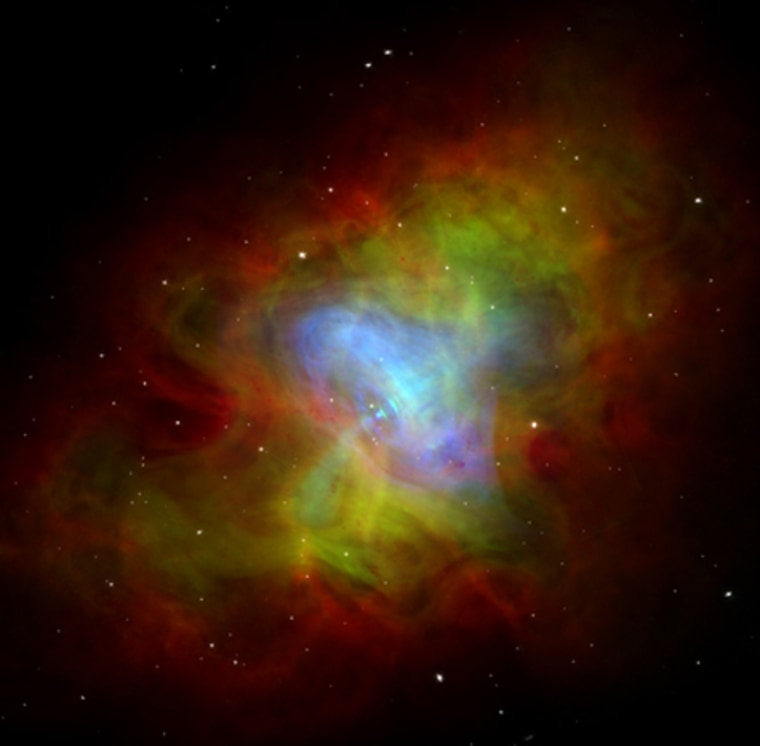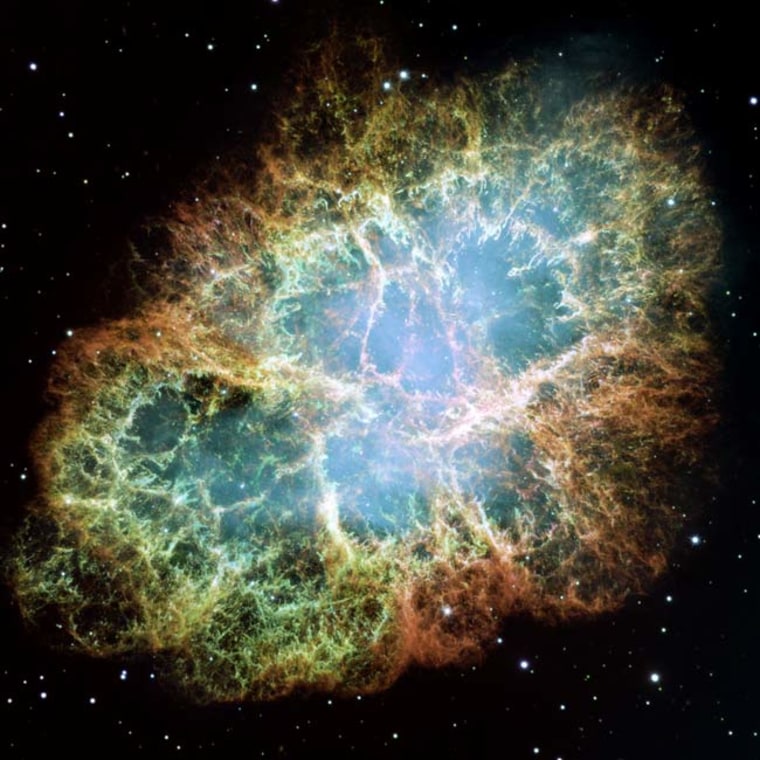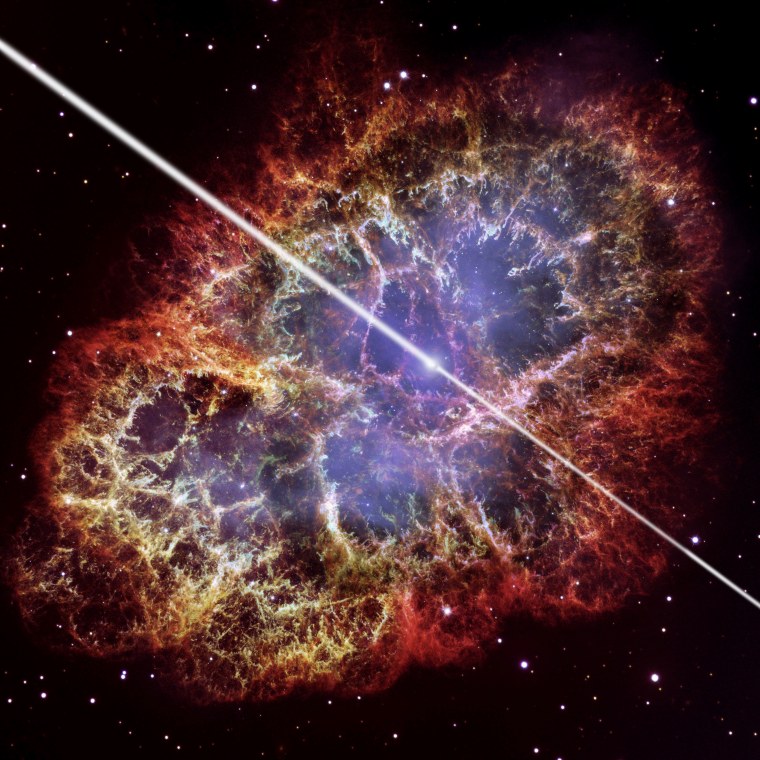At the heart of the famous Crab nebula holds an astronomical puzzle: an intense powerhouse of radiation that has defied all attempts by astronomers to explain it.
Now a new study suggests these high-energy gamma-rays come not from a pulsar at the center of the Crab nebula, but rather from a fast-moving wind believed to gust from near the pulsar.
"This puzzle — these unexpected, very high-energy gamma-ray emissions — come not from the pulsar, but from the wind," said study leader Felix Aharonian of the Dublin Institute for Advanced Studies in Ireland. "We are convinced that this is the most natural way to explain this path of emission."
The detailed findings of the study were published online Wednesday in the journal Nature.
The Crab nebula is one of the most studied objects in space. It is the wreckage of a violent stellar explosion, called a supernova. The dying star was located 6,500 light-years from Earth in the constellation Taurus when the spectacular supernova explosion occurred. The light from this blast was noticed and recorded in the year 1054 by Chinese and Native American skygazers.
At the heart of the Crab nebula is a pulsar — the remains of the original star's core that collapsed in on itself into a super-dense, spinning neutron star. This pulsar, which is so dense that it has a greater mass than the sun, spins 30 times a second.
From within the nebula's colorful folds of gas, the Crab pulsar emits a continuous beam of radiation that sweeps around, similar to a lighthouse. When viewed through ground-based telescopes on Earth, these beams appear to be pulsed.
When gamma-ray beams were detected at energy levels higher than any theories predicted, scientists' initial thoughts were that the emissions were being produced by the pulsar, since the radiation also appeared to pulse.
But by tracing the path of the energy, Aharonian and his colleagues predict that the gamma-rays are produced instead by an accelerating wind that originates near the pulsar.
For nearly 40 years, astronomers and physicists have assumed the existence of this electron-positron wind based on the properties of the pulsar and the nebula, but the wind has never been directly detected.

"All energy from the pulsar goes to the wind, and the wind goes to the nebula and carries the energy, so the wind is kind of the bridge between the nebula and the pulsar," Aharonian told Space.com. "We've never seen the wind, but we postulate its existence because we cannot experience anything in the Crab nebula without that wind. It came from a theory, but we fully believe that — because we don't have other ideas of how these energies can be transferred from the pulsar to the nebula."
The focus on the pulsar itself, Aharonian said, had been understandable: "The period of the pulsed emission is exactly the same as the rotational period of the pulsar, so the conclusion to some extent seemed obvious: If you see pulsed emission with exactly the same period, then you expect that this emission comes from the pulsar."
But as the wind flows from the pulsar to the nebula, the particles are interacting with photons from the pulsar, which creates this effect, he added. Photons are the smallest and most basic unit of light.
"Photons are everywhere, but the density is not sufficient to produce observable and detectable gamma-rays," Aharonian said.
The researchers studied the behavior of the wind along its path and noted that it is dominated by electromagnetic energy at the start, but the energy becomes more kinetic "somehow, somewhere" as the wind moves away from the pulsar, Aharonian said. "When this conversion takes place, the wind gets accelerated to much higher energies."

The scientists were also able to narrow down the likely area where the energy is converted.
"The wind cannot be very close to the pulsar, otherwise the gamma-ray emissions will be higher," Aharonian said. "But the wind cannot be much farther from the pulsar, because the target photons will be dulled with distance. So there should be a place of compromise."
The researchers calculated a narrow zone where the wind probably accelerates, but Aharonian said future studies will be needed to better characterize the behavior of the wind and the resulting gamma-ray energy.
"If we know that the radiation comes from this wind, which was before expected to be invisible, and we know where the wind is produced, now future theories should explain why wind accelerates when it does," Aharonian said.
You can follow Space.com staff writer Denise Chow on Twitter . Follow Space.com for the latest in space science and exploration news on Twitter and on .
